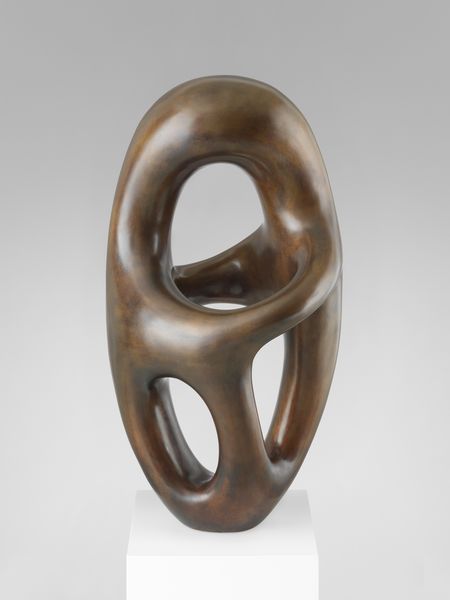Essays
Liberté Nuti on Arp’s Ptolemy II

Hans Arp, Ptolemäus II / Ptolémée II (Ptolemy II) 1958 © Stiftung Arp e.V. / Licensed by ARS, NY and DACS, London
- 13 January 2019
‘Ptolemy II’ is a majestic sculpture. The balance between solid and void in this freestanding abstract bronze is spectacular. It is Arp’s rendering of nature’s inner force.
Hans Arp was at the forefront of the 20th-century avant gardes; first, as one of the founders of the Dada movement in 1916 in Zurich and then as a Surrealist and a pioneer of Abstraction in 1931. Yet, underneath these different forays, his lifelong quest was to unearth the essence of nature. Dada was irreverent and anti-conventional, in reaction to the horrors of the First World War. For Arp, ‘Dada was against the mechanization of the world. Our African evenings were simply a protest against the rationalization of man.’ Dada was about finding sense within the nonsense. And so was Arp. The Second World War threw the world into total chaos once again. To add to these extremely disturbing times, Arp lost Sophie Taeuber-Arp, his lifelong love, art-partner and wife, accidentally in 1943. The unthinkable had happened. In the aftermath of these tough years, and in what was to become a very prolific phase, Arp went back to his search for ‘absolute.’ He had started on this path in his youth, when in a watershed moment, he created his first ‘essential’ painting in 1915.
‘Our generation takes immense pride in progress. But progress will not help us to advance towards the absolute. We are capable of blowing up the world because we do not like to compromise. We will come to an end with these fireworks without ever reaching the absolute. Wouldn’t it better to arrange a compromise that would save the earth and save art?’ —Hans Arp[1]

Hans Arp with Ptolemy I (1950), Venice, Italy, 1954. Photo: Archivio Cameraphoto © Vittorio Pavan

Liberté Nuti, 2018. Photo: Nicola Gnesi Studio
In 1952, Arp traveled to Greece on a few occasions; these trips would have a lasting impact. ‘Ptolemy II’ is titled after the Greco-Roman mathematician Claudius Ptolemy (ca. AD 100 – ca. 170), the author of three landmark treatises on astrology, geography, and astronomy. The most famous, ‘The Almagest’, contains planetary paths and star maps. ‘Ptolemy II’, with its soft oval biomorphic shape, seems to be growing organically. The bronze membrane orbits in an oval shape around a hollow space, creating a breathing center. Arp, like his younger peer Henry Moore, created sculptures around space that have their own center of gravity.
The void is the vital organ, from which the sculpture grows and radiates. The oval shape has always been a trademark of Arp’s. It recalls his early obsession with eggs—a feature of everyday life and the symbol of fertility, resurrection, and eternal life. ‘Ptolemy II’ is Arp’s message of hope. Today, Arp’s search of a deep connection with nature is more relevant than ever. The industrial area has drained the Earth. The biggest challenge humanity is now facing is the preservation of its decaying environment. If we want to survive, surely, we ought to look and listen to Arp. We must embrace the immensity of the cosmos and reconnect with nature, while, of course, never losing one’s sense of humor.
‘Ptolemy II’ will be on view as part of Hauser & Wirth’s presentation at Art Basel, from 13 – 16 June 2019.

[1] Hans Arp, “Mortal Danger” in Collected French Writings, 1954, p. 315
